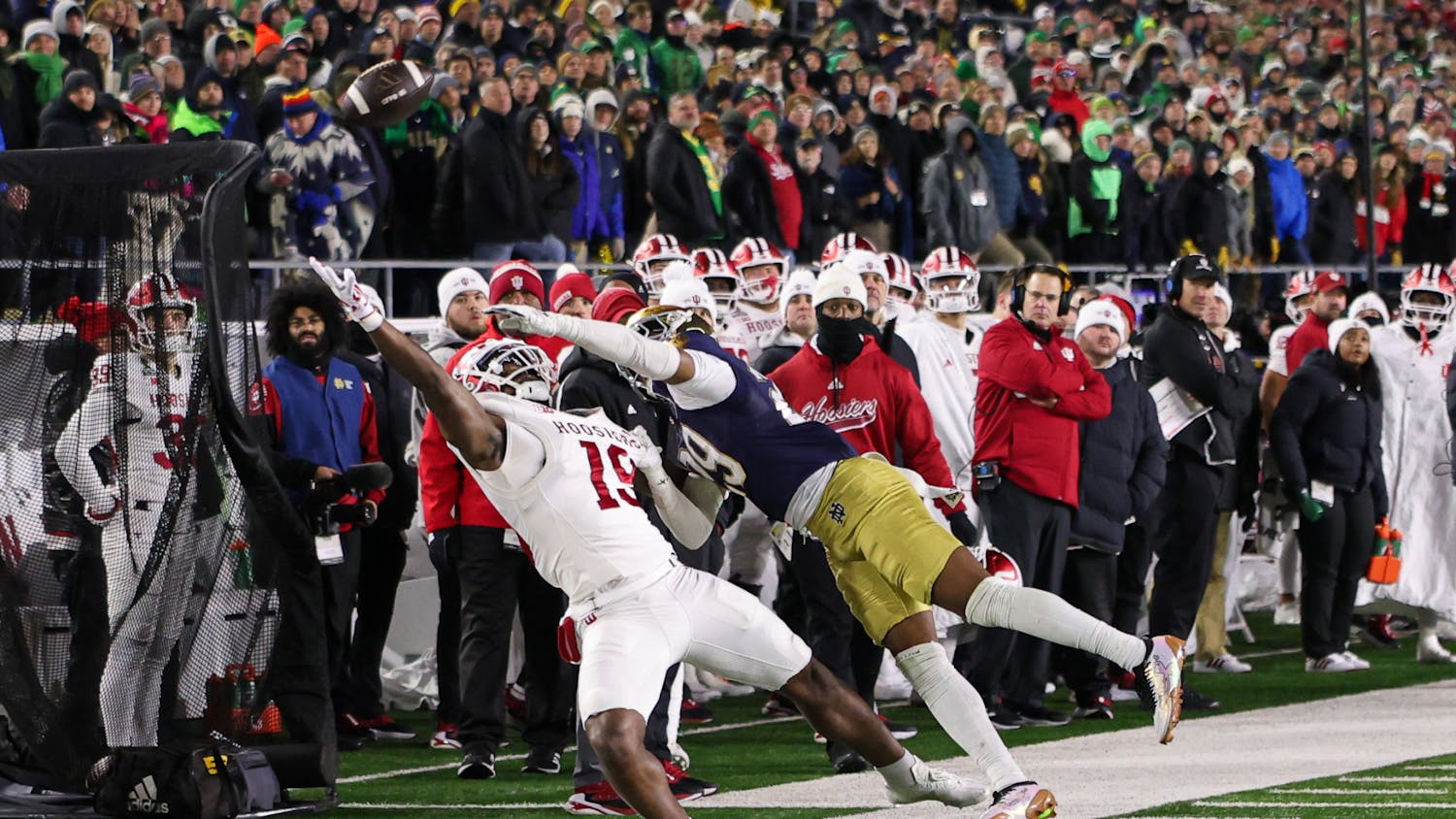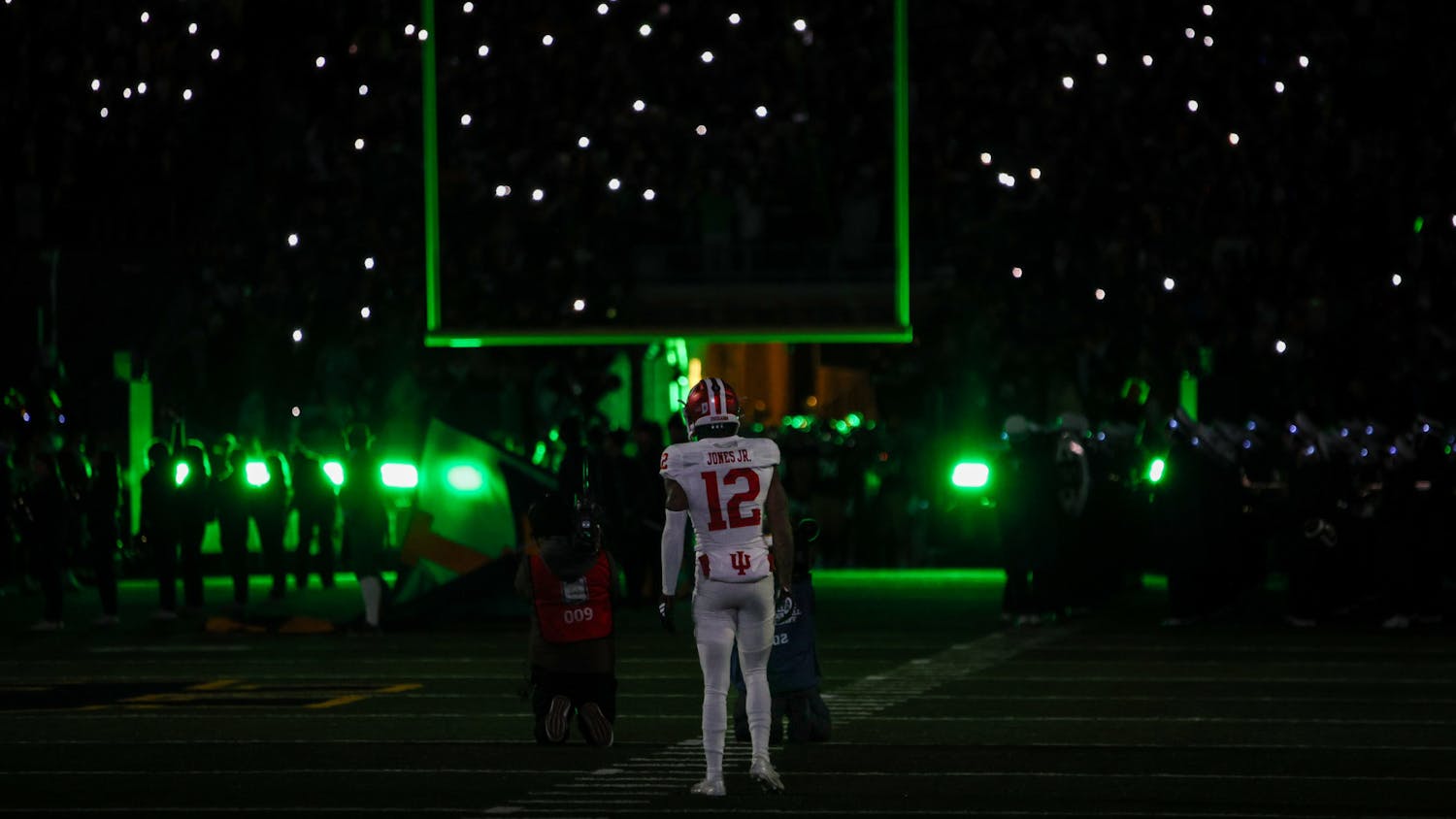With just over six minutes left in the first quarter Saturday, Indiana seemed to have some meaningful momentum for the first time in weeks. Indiana stopped Minnesota on a fourth-down deep in its own zone. Then, freshman quarterback Donaven McCulley burst through the line for an 11-yard touchdown run to put the Hoosiers up 7-0.
This, however, wouldn’t last. In fact, that was the last of the substantial momentum Indiana would hold for the entirety of the game. The Hoosiers gave up 35 consecutive points. Their offense produced a season-low 77 passing yards. By the end, Indiana fell 35-14, marking its seventh consecutive loss and continuing its helpless season.
“This is one of the hardest things we’re going through right now,” Indiana tight end Peyton Hendershot said after the game.
The fact is that Indiana again failed to put up consistent production on either side of the ball.
It became clear that Indiana didn’t have enough confidence in its offensive line to let McCulley sit back in the pocket. McCulley threw just seven passes for 17 yards and two interceptions, both of which weren’t particularly close to connecting with a receiver. Despite the fact that McCulley ran for 72 yards, Indiana’s offense was one-dimensional given its reluctance to throw the ball. Backup Grant Gremel tossed a touchdown in the fourth quarter, but the game was already out of hand.
Indiana’s defense was largely beaten at the point of attack and gave up consecutive methodical drives. The Golden Gophers put up 391 yards of total offense and controlled the clock, holding the ball for 13 minutes more than the Hoosiers. Indiana was unable to force any turnovers, an aspect of the game that it relied on heavily last season.
Each week, the disconnect between Indiana’s expectations before the season and reality this season has become more and more striking.
Indiana started the season with hopes of a Big Ten title.
They very well may finish the season without a win over a Power Five team.
The lofty goals, though, didn’t seem too far off entering the season. The Hoosiers were coming off of a historic 6-2 season, one in which they introduced themselves onto the national stage and ascended to a No. 8 ranking.
Over the summer, players and coaches talked about aspirations of winning the Big Ten. There are signs around IU’s facility that read “What have you done today to win the Big Ten?” When head coach Tom Allen took over the program in 2016, Indiana would break down its huddles with “Big Ten Champs.” But Allen put a stop to it because he felt it was unrealistic. This season, though, he allowed his players to start doing it again.
The most highly-anticipation season in IU football history wasn’t just due to the overall aura of the program, but also the fact that Indiana was returning 17 starters, including quarterback Michael Penix Jr. They brought in multiple Power Five transfers, including former five-star running back Stephen Carr.
But for a variety of reasons, those expectations fell flat.
The offense was, at most points, disjointed. Inconsistent quarterbacking play and injuries left untested true freshman McCulley as the lone healthy scholarship quarterback. There was also an exodus of playmakers, including wide receiver DJ Matthews, Indiana’s most dynamic target, who went down with a torn ACL in the fourth game of the season. The struggling offensive line, though, was arguably the root cause of the offensive woes.
Indiana’s defense, which was its strength early in the season, devolved into a liability due to injuries, including All-American Tiawan Mullen, and the fact they were on the field for a majority of the game because of the middling offense. The result was a defense that once limited Heisman candidate Kenneth Walker III to 84 rushing yards, then gave up 38 points apiece to both Maryland and Rutgers.
“A couple busts here and there,” defensive back Bryant Fitzgerald said. “When we have them third-and-seven, we have a bust or we miss a tackle. We just have to clean those up and get our eyes right. There’s just a lot of people battling through injuries and we’re just trying to fight.”
The narrative early in the season was that Indiana’s disappointing start was in part due to the strength of its opponents. Five of its first seven opponents were at one point ranked in the top 10.
But over the second half of the season, that argument has proved to be invalid. Indiana lost to a middling Maryland team. And now over the past two weeks, Indiana has dropped home games to Rutgers and Minnesota, two mediocre teams, by a combined score of 73-17. What has been most concerning is not only that Indiana lost, but the way in which the team lost.
“We've got to sustain it (production),” Allen said. “We've got to do it for four quarters. Just not good enough. Not to our standards. Not acceptable. It’s not been that way for most of the season, so pretty frustrated.”
Allen has done a lot to build this program up. Two 5-7 seasons became an 8-5 season, which became the breakthrough 6-2 season. This season was a golden opportunity for Indiana to capitalize on all of the positivity around the program. Instead, the Hoosiers regressed to arguably their lowest point in the Allen era.
It’s not as if this means Allen can’t make a resurgence, but there is much more unknown about the future of the program. It remains to be seen how much of a hit this season will take on future fan engagement and recruiting. As the season wore on, it became clear the energy around the program had changed. A once-packed Memorial Stadium became nearly all empty.
Now 2-9, Indiana’s final hope to salvage momentum into the offseason comes against Purdue in the Old Oaken Bucket game. It won’t be an easy task, given that the Boilermakers have knocked off both Iowa and Michigan State earlier this year and Indiana’s continued descent.
But the game in West Lafayette is now the only thing Allen is focused on. As he deftly strode out of the media room Saturday night, he said two words.
“Beat Purdue.”

A once highly-anticipated season has devolved into a helpless season after Indiana’s loss to Minnesota
More





